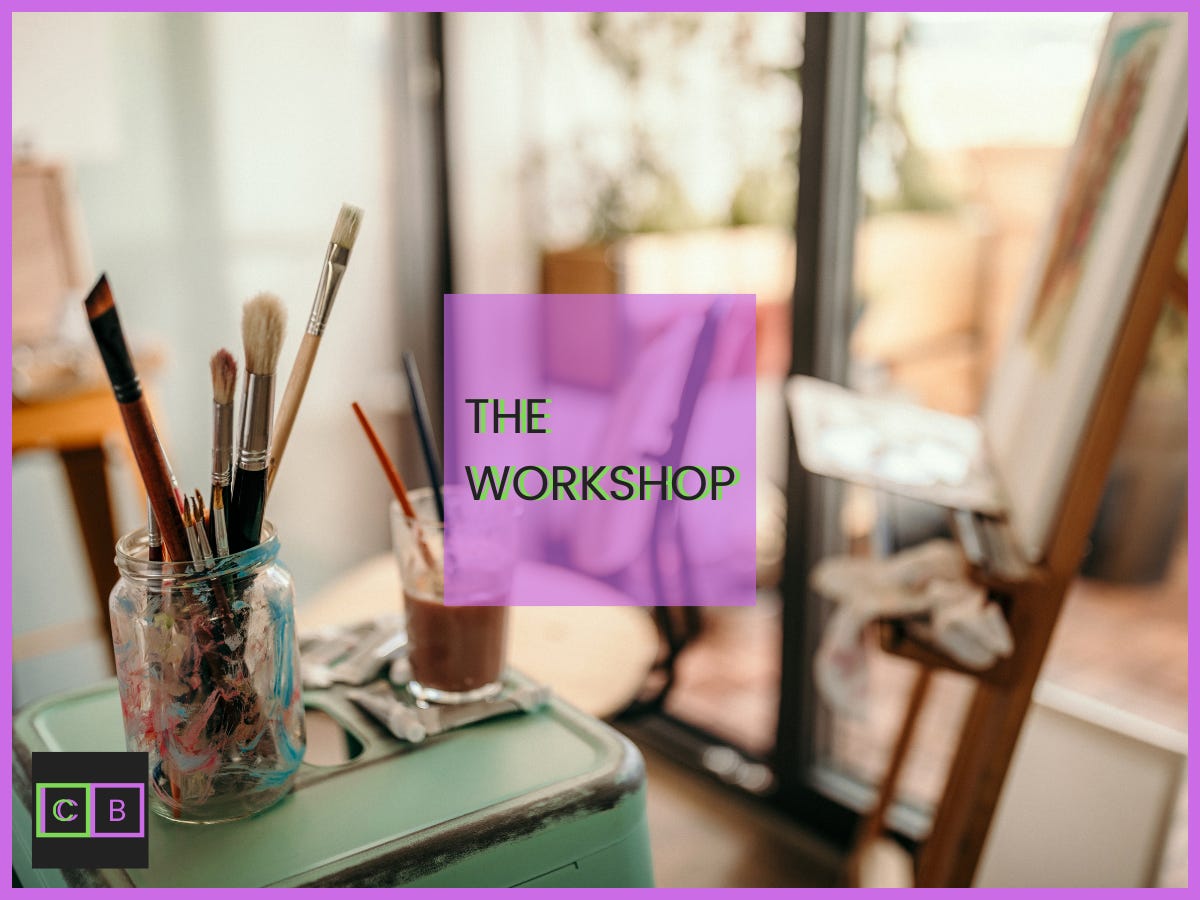3 Branding Lessons from Worldbuilders
Branding isn't logos and colors. It's worldbuilding. Here's why.
The Creative Build is now completely free! You can help support my mission to bring free business education to creative professionals by buying me a coffee or sharing this publication with others.
This teacher has become the student.
I teach business and entrepreneurship to hundreds of art and design university students each year.
A big part of my job is translating business language from the corporate world into the language of artists and designers. I help business concepts stick by making them more relatable.
How do I do it? My students teach me how. 100% of the time.
Last week was our first week of the fall term. In my first class, I taught about branding and its importance for creative professionals. I dispelled the belief that branding is about logos and color palettes. And I defined branding as “an abstract representation of a relationship between a business and its customers.”
But that’s corporate jargon. It’s my language, the language of MBAs and marketing directors. Not artists and designers.
After some open discussion and a brand visualization exercise around autumn’s brand as a season, a freshman illustration student blurted out:
“Oh. You’re talking about worldbuilding.”
Followed by a collective sigh of understanding that other teachers will recognize. Confusion in the room had instantly dissolved.
Because he was right. That’s exactly what good branding is.
Good branding is worldbuilding.
This lesson from my freshman student was valuable for two reasons. “Worldbuilding” was instantly recognized by other students, regardless of their creative fields. My future film directors, actors, animators, writers, even fine artists all immediately understood.
And we could immediately begin describing what good worldbuilding and good branding have in common.
Immersion
Worldbuilders create immersive experiences that engage the senses—and emotional responses—in creative ways. Ever been lost in a world created by a novelist?
The best brand builders do the same thing but have a big advantage. While novelists are limited to words on a page, brand builders have the entire real world in which to build immersive brand experiences.
Show, Don’t Tell
Worldbuilders show, they don’t tell. They use story to allow worlds to unfold. They might use descriptive language but they don’t lean too heavily on it. Character experiences are what really bring worlds to life.
Similarly, brand builders can’t talk their way into a great brand experience. Brand perception follows the lived experience that brand builders create.
Language
Worldbuilders use language to reinforce immersion. This sometimes takes the form of entire new languages, like Klingon in Star Trek or Naʼvi in Avatar. But it’s often more subtle and doesn’t even have to be spoken language. Think about how facial expressions—like glances between characters and smirking through the 4th wall—contributed to worldbuilding in The Office.
The best brand builders use language too. Musicians are great at this. Sit at a table full of Taylor Swift’s Swifties or Beyoncé’s Beys and you’ll hear what I mean. Or go to a sports bar on Sunday and sit near a fantasy football league. They all might as well be speaking Klingon to me.
This Week
This week, start thinking about your brand experience as a world you want to build.
How will you immerse customers in your world?
How will you show what your brand stands for instead of just talking about it?
How will you use language to reinforce your curated brand experience?
I’d love to hear about any progress you make.
As my student taught me last week, I still have much to learn.
I’m just getting started with this parallel between worldbuilding and brand experience. If this sparked new ideas for you, I’d love to hear them!
Want more help like this to boost your creative business? Now’s your chance.


